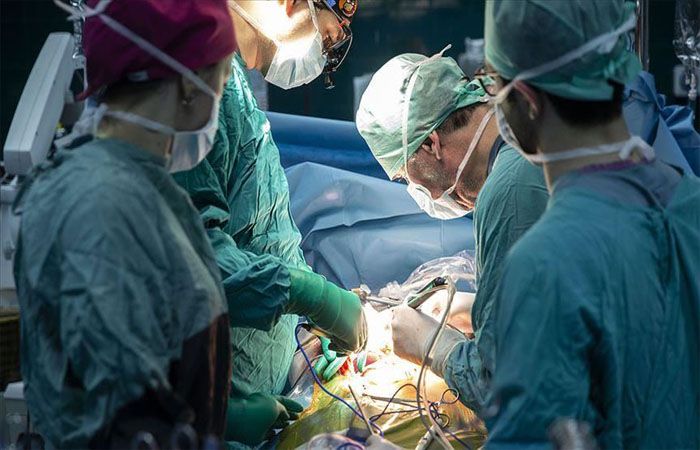A liver transplant is an extensive surgical procedure in which the improperly functioning liver is removed and replaced with a healthy liver from either a deceased donor or a portion is taken from the liver of a healthy donor.
The liver is the largest internal organ performing various critical functions, including:
- Processing nutrients, medications, hormones
- It produces bile, that aids in the absorption of fat, cholesterol, and fat-soluble vitamins in the body.
- Making proteins to help in blood clotting
- Removing bacteria and toxins from the blood
- Preventing infection and regulating immune responses
Liver transplant is the last resort and is reserved as the treatment option with those who have end-stage liver disease. A liver transplant may also be the only treatment option for people showing acute liver failure.
The number of patients who are waiting for a liver is more than the number of deceased donors that are available. Living-donor liver transplant is a supplement to the patients who are waiting for their turn on the list for the dead donors to be available.
Living-donor liver transplant is possible because the human liver regenerates and returns to its normal size after the surgical removal of part of the organ. The liver has the ability to self regrowing and form a complete organ from the part transferred in the patient. This is the concept behind transferring a portion of the liver from a healthy donor and into the recipient.
What is living donor liver transplantation?
Living donor transplantation involves the surgical removal of a portion of the donor’s healthy liver for transplantation into a patient who needs one. A family member or someone related to the person are usually considered for donation. This procedure is only possible because of the liver’s unique ability to regenerate. After transplantation, both the partial livers of the donor and recipient will grow and remodel to form complete organs in a short duration of time. This depends on the level of recovery also.
Why is living-donor liver transplantation desirable?
Living donor liver transplantation has two major advantages
- There is an improved survival rate. For the same person undergoing a deceased donor liver transplant versus a living donor liver transplant, the survival rates can be as follows –
One Year Adult Liver Patient Survival
- Patient Survival with Deceased-Donor liver: 90.18%
- Patient Survival with Living-Donor liver: 84.21%
Three Year Adult Liver Patient Survival
- Patient Survival with Deceased-Donor liver: 78.87%
- Patient Survival with Living-Donor liver: 96.67%
One Year Pediatric Liver Patient Survival
- Patient Survival with Deceased-Donor liver: 92.68%
- Patient Survival with Living-Donor liver: 100%
Three Year Pediatric Liver Patient Survival
- Patient Survival with Deceased-Donor liver: 96.97%
- Patient Survival with Living-Donor liver: 100%
Who can be a living donor?
General criteria include:
- A good general health
- Having a compatible blood type with the recipient
- Being between the ages of 18-55
What are the major risks of donating?
Risks to the donor are very limited. The surgery is relatively a very safe one for the donor, having the incidence rate of side effects as minimum as 1 in 10,000. But some outcomes can be –
- Bleeding
- Infection
- bile leakage
- Donor being affected by a liver ailment later in life
What is cadaveric liver transplant?
Cadavers, are also a common source of organ transplantations – mostly liver transplants. Deceased donors have already consented in advance for organ donation. After a donor is declared legally dead (brain dead), their organs are removed and preserved for transplantation. This transplant has to happen in the next 24 hours.
With the increase in organ trafficking, more and more laws are there to improve the safety standards of transportation. The number of organs from previously healthy donors, unfortunately, is decreasing and the average age of the deceased donor is increasing.
Advantages of a Cadaveric Liver Transplant over a living donor transplant?
A liver that is harvested from a brain dead patient is a better choice for transplant. It has some benefits which can be: relationship between the donor and recipient is not necessary. The donor doesn’t necessarily have to from the patient’s family, and a big organ transplant can be done for the patient.
Otherwise, there is no additional advantage. Depending on the equipment, the efficiency of the surgeons, and the crucial post-operation care phase, most of these surgeries have the same outcome.
Cost of Liver transplant cost in India
There is a notable price difference between different types of liver transplants surgeries. For a family who is able to arrange for a similar blood group donor for the surgery, the price is comparatively lower.
To conclude, a living donor liver transplant surgery is cheaper than a deceased donor liver transplant surgery.
This is because –
- Amount of testing done on the cadaver is higher
- The surgery is done in a state of emergency (24 hours right after a brain dead patient arrives)

